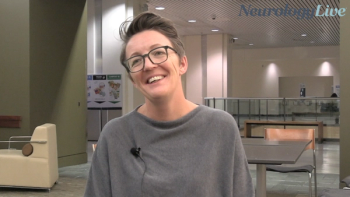
Adding to the Literature of KIF5A in ALS Pathogensis: Devesh Pant, PhD
The instructor in the department of cell biology at Emory University provided context on a presentation at MDA 2024 regarding mutations in Kif5a in familial forms of amyotrophic lateral sclerosis. [WATCH TIME: 4 minutes]
WATCH TIME: 4 minutes
"It’s kind of interesting and challenging to work on a gene which you can use to try to answer 4 different diseases, and hopefully, we can find some useful targets that can be used for as biomarkers, or even for therapeutics."
About 90% of amyotrophic lateral sclerosis (ALS) cases are sporadic, while the remaining 10% are familial. In recent years, there has been great advances in understanding the genetic makeup of these familial cases, with more than 40 associated genes now identified. In 2023, the field saw its first approval for a therapy (tofersen; Biogen) to specifically target patients with SOD1-mutated mediated ALS, one of the most common familial forms of the disease.
Although drug development has ramped up, patients with ALS lack validated biomarkers and therapeutically beneficial targets. Recently, loss and gain of function in KIF5A, a kinesin superfamily motor protein that transports various cargos in neurons, was suggested as a potential cause for certain forms of familial ALS. Research has shown that mutations in KIFs and dynein subunits often cause motor neuron diseases, such as ALS, Charcot-Marie-Tooth disease and spastic paraplegia.1
At the
REFERENCE
1. Nakano J, Chiba K, Niwa S. An ALS-associated KIF5A mutant forms oligomers and aggregates and induces neuronal toxicity. Gene Cells. 2022;27(6):421-435. doi:10.1111/gtc.12936
2. Pant DC, Parameswaran J, Rao L, et al. ALS-linked KIF5A Exon27 mutant causes neuronal toxicity through gain-of-function. EMBO Rep. 2022;23:e54234. doi:10.15252/embr.202154234
Newsletter
Keep your finger on the pulse of neurology—subscribe to NeurologyLive for expert interviews, new data, and breakthrough treatment updates.



































